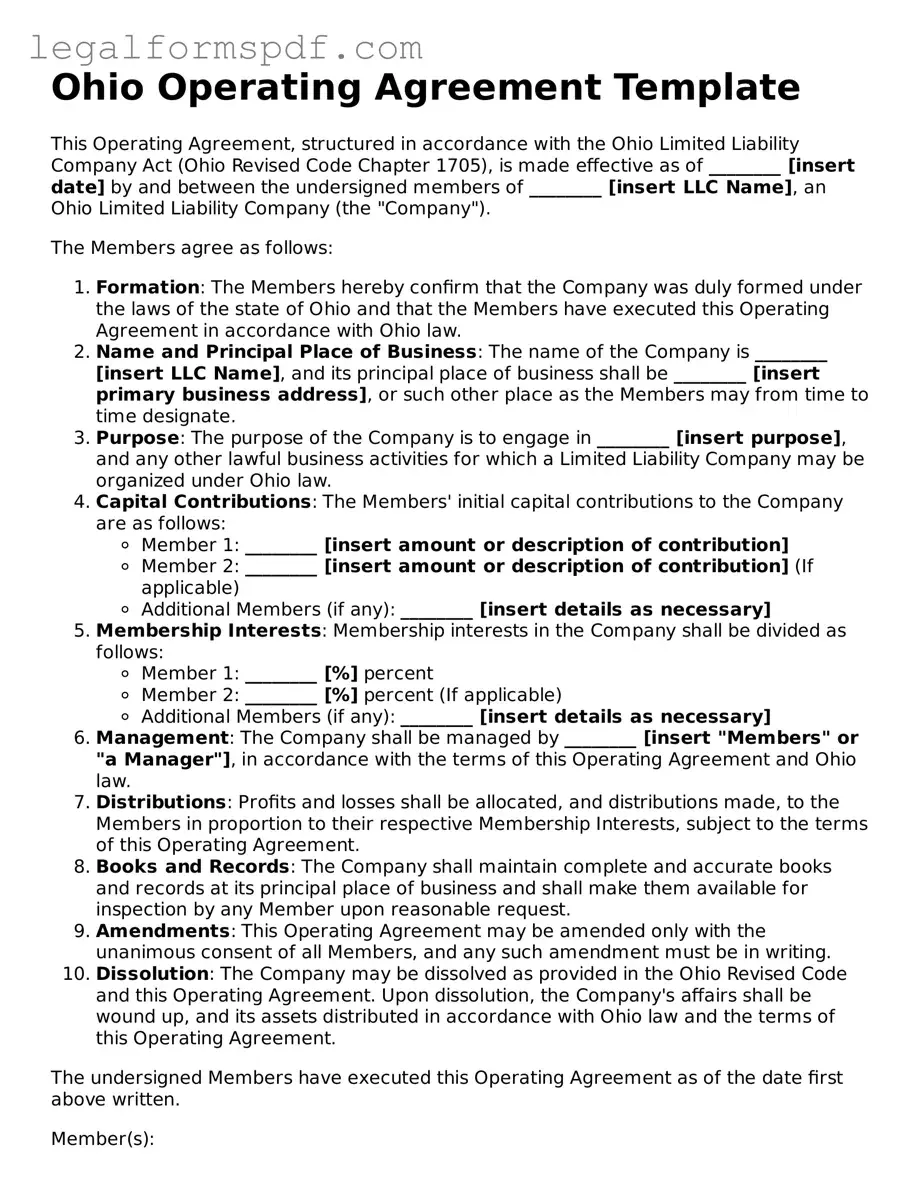An Ohio Operating Agreement shares similarities with a Partnership Agreement as both outline the operations of a business entity and define the roles and responsibilities of the parties involved. These agreements are designed to prevent future disputes by clearly laying out how decisions are made, profits shared, and the process for handling exits or dissolving the business. While an Operating Agreement is used for Limited Liability Companies (LLCs), a Partnership Agreement is specifically for partnerships, making them tailored to their respective business structures.
Similar to Bylaws in a corporation, an Ohio Operating Agreement serves as the foundational document that governs the internal operations of an LLC. Bylaws are crucial for corporations as they establish the rules and procedures for corporate governance, including the organization of the board of directors, the conduct of shareholder meetings, and other essential operations. Both documents ensure that the business complies with state laws while providing a structure for management and operational processes.
An Ohio Operating Agreement and a Shareholder Agreement both focus on the ownership structure of a business entity but differ in applicability. Operating Agreements are for LLCs and detail members' rights, responsibilities, and profit distributions. In contrast, Shareholder Agreements are used in corporations to outline the shareholders' rights, responsibilities, and the procedures for buying and selling shares. Despite these differences, both aim to protect the interests of the business owners and establish a clear framework for the company's governance.
The similarity between an Ohio Operating Agreement and an Employment Agreement lies in their function to define roles and responsibilities within a business entity. While an Operating Agreement outlines the structure and operational guidelines of an LLC, including the roles of its members, an Employment Agreement specifies the terms of employment, duties, and rights of an employee within the company. Both are crucial for clarifying expectations and responsibilities to ensure smooth operations.
An Ohio Operating Agreement bears resemblance to a Business Plan in that both are instrumental in the strategic planning and foundation of a company. A Business Plan outlines a company's goals, strategies, and financial forecasts, serving as a roadmap for growth and success. Though an Operating Agreement focuses more on the governance and operational aspects of an LLC, it similarly sets the stage for the company's functionality and approach to achieving its objectives.
A Buy-Sell Agreement is another document similar to an Ohio Operating Agreement, specifically regarding the procedures for transferring ownership interests. An Operating Agreement includes provisions for what happens if a member wants to leave the LLC, dies, or becomes incapacitated. A Buy-Sell Agreement, often used in partnerships and corporations, outlines how a partner's or shareholder's interests are bought out or sold, ensuring business continuity. Both documents help prevent conflicts by having predefined terms for handling such transitions.
An Ohio Operating Agreement and a Non-Disclosure Agreement (NDA) share the purpose of protecting sensitive business information. While the primary function of an Operating Agreement is to outline the structure and policies of an LLC, it can include clauses to safeguard proprietary information and trade secrets, similar to an NDA. An NDA specifically prohibits the disclosure of confidential information to unauthorized parties, directly focusing on the security of intellectual property and other confidential data.
Lastly, an Ohio Operating Agreement is akin to a Commercial Lease Agreement in that both involve agreements critical to the operation of a business. A Commercial Lease Agreement stipulates the terms under which a business rents commercial space, detailing rent, lease duration, and use of the property. While an Operating Agreement governs the overall operations of an LLC, provisions regarding the leasing or ownership of property necessary for the business can also be included, making both documents essential for business operations.
